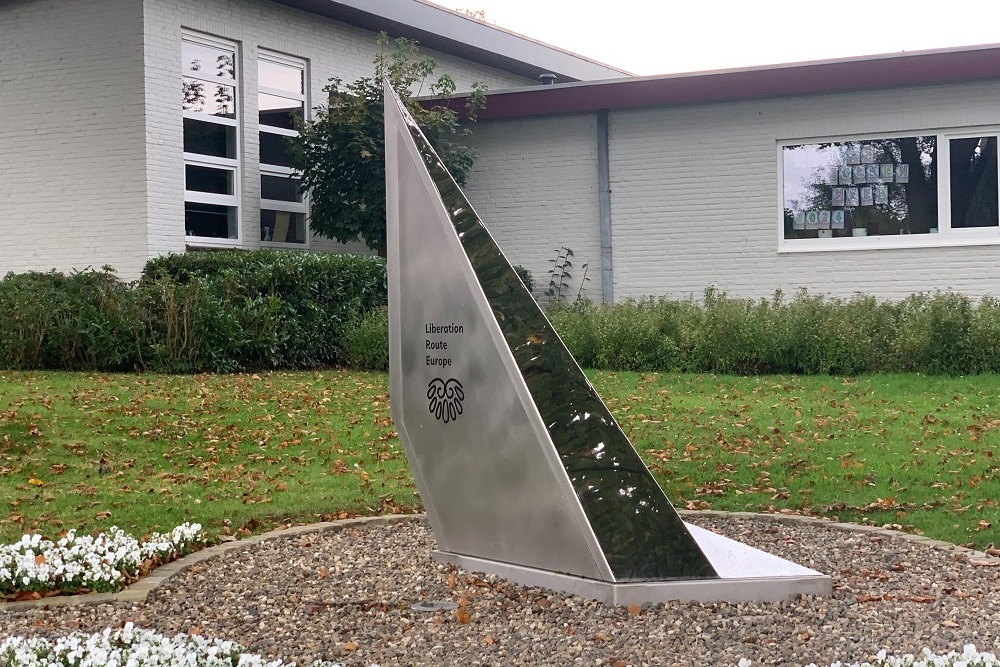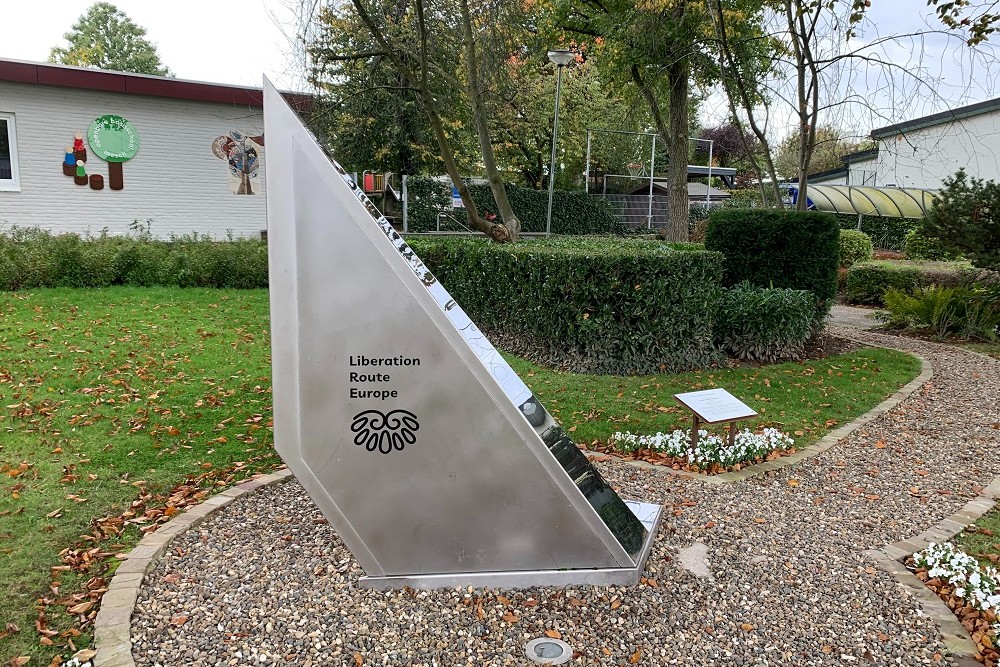Vector of Memory: Welcome to Holland
Welcome to Holland
More than three months after the difficult landing in Normandy, men of the 30th American Infantry Division, better known as the Old Hickory, reached the Belgian-Dutch border at the Delahaut crossroads in the early morning of 12 September 1944 near the village of Mesch. Schoolteacher Jef Warnier became the first Dutchman to be liberated.
The evening before, on Monday 11 September, German soldiers from the Belgian Voer region retreated to Mesch. They parked their vehicles with ammunition in a meadow behind the café of the Van Hoven family at the Grijze Graaf. They set up the café as an emergency hospital. The family were ordered to hide in the cellar. The next morning, everyone was startled by a thunderous explosion. The contents of the vehicles had been detonated.
Gunshots and cannon roars were getting closer and closer. The family members remained in the cellar to be on the safe side. Jef Warnier, a schoolteacher who lived across the street, could not contain his curiosity. He too had spent the whole night with his family in the cellar. When it suddenly became silent, Warnier went to have a look and saw a German soldier with his arms in the air. An American was holding him at gunpoint. The only thing that Warnier could utter was: 'Welcome to Holland'.
It is uncertain whether Warnier can lay claim to being the 'first liberated Dutchman', however. The Smeets family lived in the De Muggehof farm at the Schansweg in Laag-Caestert, a hamlet south of Eijsden. The first American armoured cars reached their farm around 11.30 a.m. on 12 September. The Smeetsen therefore also laid claim to the title.
Noorbeek, situated more to the east, claimed a similar title: 'the first liberated village in the Netherlands'. It is certain that units of the Old Hickory Division entered the extreme south of Limburg at several points on that day. It is not known exactly where and what time. Apart from the thoroughfares and a few border posts, the border was not clearly marked anywhere and ran invisibly through fields and orchards.
Audiospot - Welcome to Holland
Liberation Route Europe is a certified Cultural Route of the Council of Europe. With hundreds of sites and stories in nine European countries, the route links the main regions along the advance of the Allied Forces in 1943-1945.
The entire route consists of themed routes that can be travelled by by hiking, walking, cycling and car. These routes pass numerous historical and interesting sites and tell stories from a multitude of perspectives that were important in the final phase of World War II.
A separate group within the routes are the Vectors of Memory designed by renowned architect Daniel Libeskind. They form a symbolic family of landmarks that honor people, places and stories in the European landscape. The vectors are a topography of memory. They act as points in both space and time and connect to the liberation story. It is important that the markers convey a clear and powerful message.
There are 4 types of vectors:
- The Remembrance Site Vector
- The Crossroads Vector
- The Wall Vector
- The Floor Vector
For more information on the Vectors of Memory see the Liberation Route Europe site: https://www.lre-foundation.org/vectors-of-memory/.
The routes can be found on the website of Liberation Route Europe or in the app through which many stories can also be listened to.
Do you have more information about this location? Inform us!
Source
- Text: TracesOfWar & Liberation Route Europe
- Photos: Ed Lewandowski
Nearby
Museum
- Fortress Eben-Emael - Eben-Emael (Bassenge)
- Museum of the Fort Aubin-Neufchâteau - Neufchâteau (Dalhem)
- Museum Maison du Souvenir - Hermalle-sous-Argenteau
Point of interest
- Information sign The escape of Emperor Wilhelm II - Eijsden
- Information Sign Escape to freedom with tugboat Altas V - Eijsden
- First Liberated House in the Netherlands - Eijsden
Monument
- Memorial 30th Division Old Hickory - Mesch (Eijsden)
- Remembrance Cross Leonard J. Hoffman - Moelingen
- Memorial Executions 7 August 1914 - Moelingen (Voeren)
Cemetery
- Belgian Grave Resistance Member Jules Goffin - Voeren
- Dutch War Graves Roman Catholic Cemetery Eijsden - Eijsden
- Belgian War Graves Mons - Mons (Dalhem)
Remembrance Stone
- Stumbling Stone Rijksweg - Eijsden
- Stumbling Stone Joseph Partounsstraat - Eijsden
- Stumbling Stone Kapelkesstraat 14 - Eijsden






